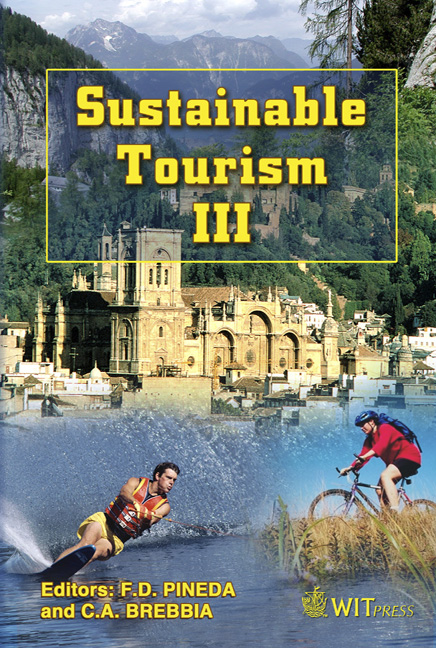Valuing Water In Dry Land Tourism Regions
Price
Free (open access)
Transaction
Volume
115
Pages
14
Published
2008
Size
499 kb
Paper DOI
10.2495/ST080211
Copyright
WIT Press
Author(s)
L. Lehmann
Abstract
Water, particularly fresh water, is one of the most critical and scarce natural resources. It is well documented that the tourism industry over-uses water resources by at least a factor of two over permanent residents. In some regions of the world, where tourism is a major industry, this can result in water shortages and degradation of water supplies, as well as increased production of waste water. Water scarcity in some areas has also led to increased interest in water recycling, desalination, improved water storage capabilities and water conservation measures in order to provide greater water security into the future. This paper aims to review and analyse the current literature concerning water management initiatives in the tourism sector and the contrast between water demand and supply for sustainable tourism. The diverse nature of tourism activities makes the analysis of water uses and impacts quite different to other sectors such as agriculture or manufacturing. In effect tourism is defined on the basis of consumption rather than production and there are many ways of consuming water in tourism. The aim of this paper is to identify issues associated with water use and tourism in semi-arid or dryland environments and to inform a wider research project that aims to map the uses of water in tourism, to establish a water valuation method that considers the consumptive nature of tourism and to develop a model to guide tourism policy to achieve sustainable water use for tourism enterprises and communities. Keywords: resource use in tourism, sustainable water use, tourism planning, climate change and tourism, tourism marketing, visitor behaviour.
Keywords
resource use in tourism, sustainable water use, tourism planning, climate change and tourism, tourism marketing, visitor behaviour.





